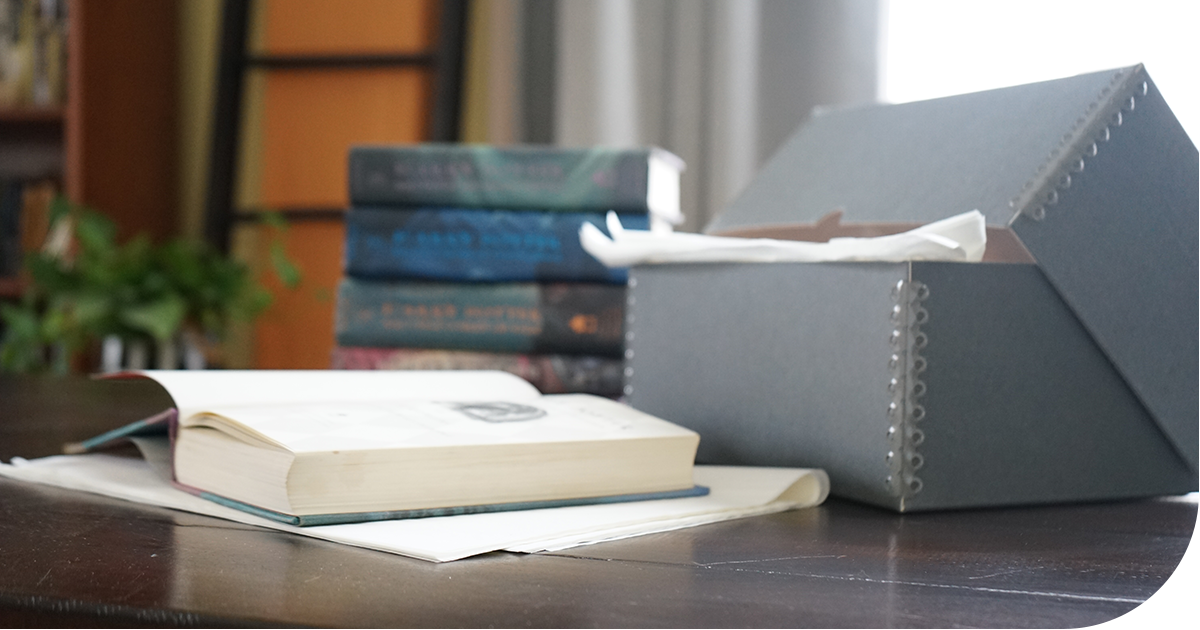To maintain the integrity of your book collections, it’s important to take the time to look at the causes of damage and deterioration. By taking steps to mediate these issues, a book’s lifetime can be extended.
Maintain Handling Standards
- Ensure that your hands are clean and dry.
- Wash and dry your hands to prevent the transfer of dirt, oils and other potential contaminants.
- Don't use any hand creams or lotions.
- We no longer recommend the use of white cotton gloves when handling rare books or paper due to loss of manual dexterity. Clean hands are all that are needed to safely handle books and documents. If you must wear gloves, consider using nitrile.
- Periodically, check your hands or gloves for any transfer of dust or dirt.
- Make sure you are providing support to the spine of the book.
- Books are intended to be held in your hands or lap, it's important to support the spine to prevent damage.
- If a book needs to be set on a table, use a book cradle to support the spine.
- Books can be severely damaged during photocopying on a standard copy machine with a flat platen.
- Limit copying to trained staff. If you must use such a copier, never press the spine down to get a good image.
- Investing in a copier specifically designed for photocopying books may be beneficial if you are frequently copying book pages.
Storage Requirements
Books are composed of a variety of materials, which makes them especially vulnerable to the environment they are stored.- Avoid exposure to excessive amounts of light. Light damage is irreversible—daylight and fluorescent lighting have high levels of UV radiation which can cause damage rapidly.
- No books or paper products should be stored in a basement or attic.
- A stable temperature and relative humidity are crucial.
- Hot, dry conditions can cause paper and leather to become brittle.
- Warm, damp conditions can encourage mold growth and pests.
- For large collections, powder-coated shelving can be an economical choice.
- Ensure that books stand vertically and have firm support on either side. Any leaning will put stress on the book and deform the spine.
- Book supports can be used but they should be stable and have a smooth surface to avoid damaging book covers.
- Don't pack the shelf too tight. Doing so will make the books harder to remove.
- Leave an inch or so of space behind shelved books to promote air circulation.
- Volumes that are taller than 18" or have a spine more than 3" wide should be stored flat.
- Don't stack more than 2-3 volumes on top of each other. Use protective pads between each volume.
- Smaller collections or books that are rare, fragile or damaged should be stored in individual boxes.
- All storage materials should be acid- and lignin-free.
- Do not wrap books in any non-archival plastic.
- Custom boxes can be tailored to fit any book.
- Another option would be to choose the closest size available and pad the extra space with archival-quality tissue.
Repair
- Choose archival-quality materials and adhesives that will remain flexible over time.
- For rare books, leather bindings, or special collections, it's recommended to consult with a professional bookbinder or book conservator
- Locate a conservator near you with AIC's Find a Conservator tool
For Further Reading:
- Read Case Study VII: Books and Other Bound Materials from our Guide to Collections Care.
- Caring for Your Treasures: Books.© American Institute for Conservation of Historical and Artistic Works.

